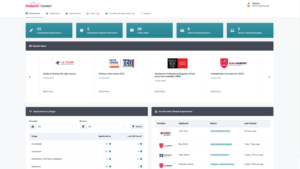Not all CRMs are created equal – so how do you make sure your systems deliver

Over the years we’ve had to replace a range of different existing systems with StudyLink Connect. The one we scratch our heads about the most is when a client has used a traditional ‘one size fits all’ CRM tool to try and do enquiry management, lead nurturing, agent and partner management and admissions all in one.
It’s not hard to see why this happens. These CRMs come with dynamic names and slick marketing that convince you they can do anything. And before you know it, you’ve spent many thousands (and sometimes millions) of dollars – and still not got what you wanted.
I think the problem is in the name. CRM, or customer relationship management, indicates these systems can do everything to manage your customer interactions. Nothing could be further from the truth. Traditional CRMs should be known as ‘customer record managers’ because that is what they actually do. And they do it well. But they are an account management tool recording details of your partner or customer, with limited functionality beyond that. There are CRMs that have been built to manage the specific student recruitment and admissions process and as long as these work for you out of the box they can be a good solution. But trying to use a traditional customer record management system as the basis of your recruitment and admissions solution can be a bad place to start - you’re basically choosing this system as your development platform and locking yourself into its capabilities and the skilled (expensive) developers who know how to configure it to meet your needs.
"I think the problem is in the name. CRM, or customer relationship management, indicates these systems can do everything to manage your customer interactions. Nothing could be further from the truth."
So, how do you avoid falling into the traditional CRM trap? We recommend reviewing your complete customer journey – the main touchpoints and key requirements at each stage – and then looking at systems that can deliver these requirements. And those systems might not be CRMs. Most can seamlessly exchange data with other systems at various stages. But you should define which will be the source of truth for customer data at each step of the journey. They might – and probably should – be different.
For example, a lead nurturing tool or traditional customer Record Management tool could be your source of truth during the enquiry stage. But a different system might work better from application to enrolment, with another the answer for enrolled students and yet another managing alumni.
The key is looking at the customer journey, simplifying it into key stages and core requirements. Only then can you appropriately match tools to the needs of you and your customers.
If you’d like to talk to us about which systems we think work well together in an agent and student customer journey, and how StudyLink Connect can help link some of these systems, please get in touch.
Learn how StudyLink Connect can convert more quality applications to your institution, submit an enquiry to talk to our Sales team.



